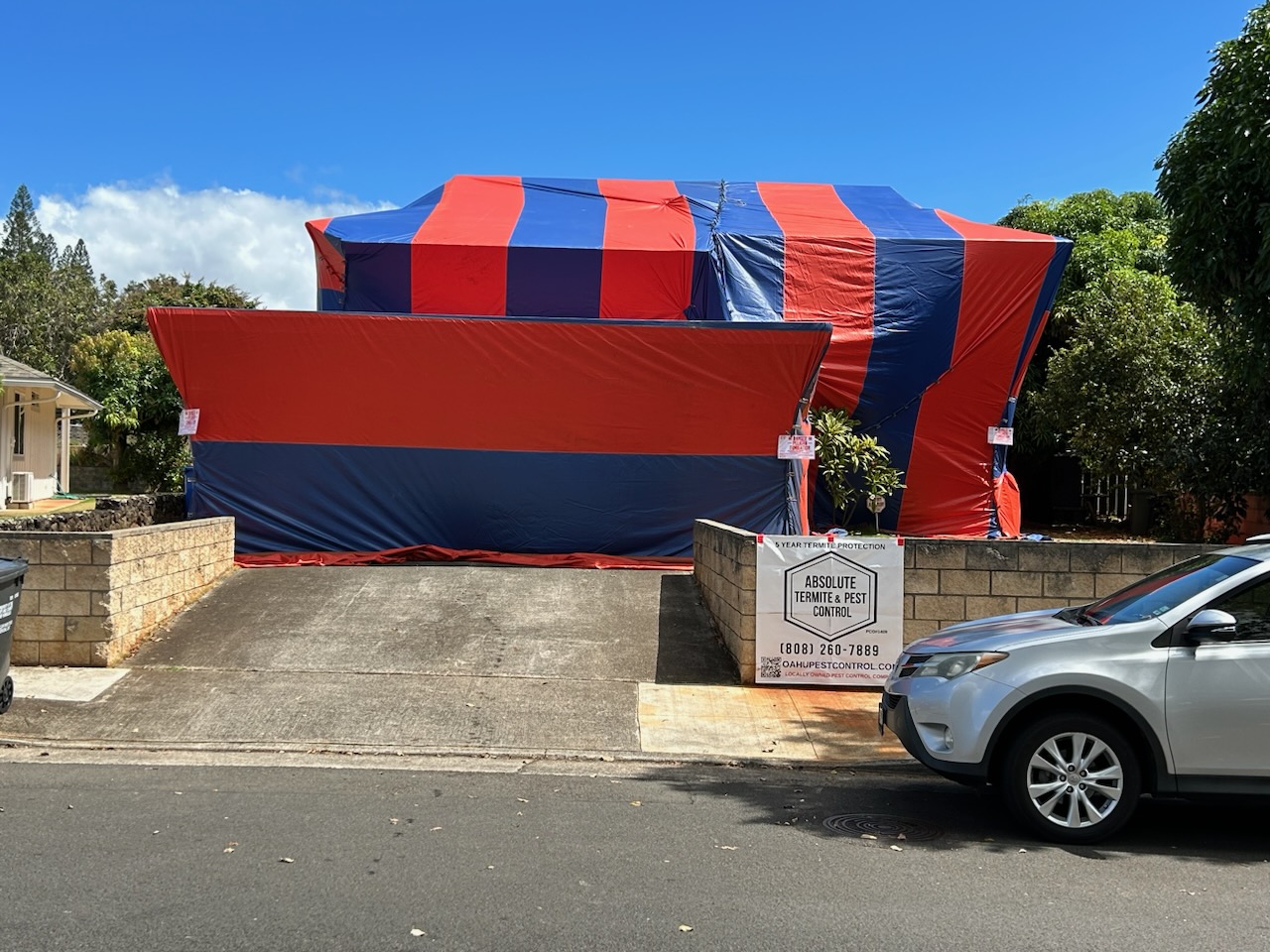Carpenter Ants vs Drywood Termites Which Pest is the Bigger Threat
- Absolute Pest Control Hawaii PCO#1409
- Sep 4
- 4 min read
When it comes to household pests, few creatures cause as much concern as carpenter ants and drywood termites. Both pests can lead to severe damage to your home, but they behave differently and have unique risks. In this post, we will compare these two pests, highlighting their characteristics, behavior, and the potential damage they can inflict.
Understanding Carpenter Ants
Carpenter ants are large, primarily black or sometimes bicolored ants found in various environments—particularly wooded areas. Unlike termites, carpenter ants do not eat wood; they excavate it to create nests. This behavior can lead to significant structural weakening over time, especially if infestations are not caught early. A colony can contain anywhere from a few hundred to several thousand ants, and they are most active during warmer months, often foraging for food.
Detecting carpenter ants typically involves looking for signs such as sawdust-like frass, which is a byproduct of their nesting activities. For instance, in regions with high moisture, carpenter ant nests can be found in damp, decaying wood. Homeowners may also spot the ants, notably during mating season when winged reproductive ants swarm.
Specific Example
In a study published by the University of California, pests like carpenter ants can consume hundreds of gallons of wood over a duration of 10 years, potentially costing homeowners thousands in repairs if left unchecked.
The Nature of Drywood Termites
Drywood termites are distinctly different from carpenter ants. These termites thrive in dry wood and don’t require contact with soil, making them particularly hazardous for homes with wooden structures. They feed on wood, which can result in extensive damage quickly. A colony of drywood termites can contain from a few hundred to several thousand members, much like carpenter ants. However, their wood-eating habits are particularly destructive.
Signs of a drywood termite infestation include small piles of fecal pellets, resembling sawdust, and discarded wings near windows or doors, indicating swarming behavior. If left untreated, drywood termites can cause serious structural damage, leading to costly repairs. According to pest control experts, a single colony can damage a house’s structural integrity within just a few months.
Specific Example
Experts estimate that drywood termites can consume about 4 to 5 grams of wood per day. Over the course of a year, one colony may consume up to 200 pounds of wood, underlining the urgent need for early detection and treatment.
Key Differences Between Carpenter Ants and Drywood Termites
Feeding Habits
One major difference is in their feeding. Carpenter ants do not eat wood; their role is to hollow it out for nesting. In contrast, drywood termites eat wood, leading to more severe and faster structural damage.
Nesting Behavior
Carpenter ants prefer moist, decaying wood for nest-building, while drywood termites choose dry, sound wood. This distinction can help homeowners determine which areas of their homes might be at risk for infestation.
Damage Assessment
While both pests can inflict damage, the types differ. Carpenter ants may weaken wooden structures over time, but drywood termites can cause rapid and severe destruction due to their continuous wood consumption. For example, a drywood termite colony could weaken load-bearing beams, leading to serious safety risks in just a few months.
Treatment Options
Management strategies differ as well. Carpenter ants may be controlled with baiting and insecticides, while drywood termites often require more extensive treatments like fumigation or localized treatments, which can range from $1,200 to $2,500 depending on the severity of the infestation.
Identifying Infestations
Signs of Carpenter Ant Infestation
Sawdust-like Frass: Look for small piles of sawdust near wooden structures.
Live Ants: Finding large black or bicolored ants, especially in warmer months, can indicate an infestation.
Rustling Noises: If you hear rustling from within walls or wooden structures, it may be a sign of nesting activity.
Signs of Drywood Termite Infestation
Fecal Pellets: Spotting small, pellet-like droppings near wooden structures is a telltale indication of drywood termites.
Discarded Wings: Finding shed wings near areas like windows or doors can suggest swarming.
Hollow Sound: Tapping wooden structures might produce a hollow sound, indicating termite damage.
Effective Prevention Strategies
For Carpenter Ants
Eliminate Moisture: Fix leaks and remove standing water around your home. Carpenter ants thrive in moist environments.
Seal Entry Points: Close gaps and cracks in your home’s exterior to block the ants from getting inside.
For Drywood Termites
Maintain Wood: Keep wooden structures dry and in good condition to lower the chance of infestation.
Properly Store Firewood: Store firewood away from the home and off the ground to reduce attraction for termites.
Professional Inspections: Schedule routine pest control inspections to catch any signs of infestation early on.
Final Thoughts
In the comparison between carpenter ants and drywood termites, both pests represent serious threats to your home, but they behave and cause damage in different ways. Carpenter ants may gradually weaken structures, while drywood termites can lead to rapid and severe destruction with their eating habits.
Understanding these differences is essential for effective prevention and treatment. By remaining vigilant and proactive, homeowners can safeguard their properties from these damaging insects and maintain their homes' structural integrity.

By taking proactive measures to identify and manage these pests, you can ensure your home is safe and sound for years to come.











Comments